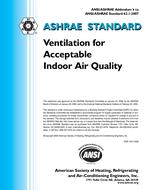There are many unanswered questions about the typical effects of duct system operation on the infiltration rates and energy use of single-family residences with heating, ventilating, and air-conditioning (HVAC) systems in their basements. Results from a four-house field study in Maryland and computer simulations are used to examine the potential for improvement in efficiency of air distribution systems in such houses. The field study results are focused on characterising the air flow performance of the four duct systems and the physical characteristics of the houses and duct systems. Simulations of a basement house, the characteristics of which were loosely based on those from the measured houses, were performed to investigate the energy-saving potential for basement houses. The simulations estimate that a 9% reduction in space-conditioning energy use is obtained by sealing 80% of the leaks and adding insulation with an R-value of 0.88degC.m2/W (5degF.ft2.h/Btu) to uninsulated sheet-metal ducts that are accessible from the basement. Simulations were also run with all ducts insulated to 17.6degC.m2/W (100degF.ft2.h/Btu) and with no duct leakage, for which the savings in energy use was increased to 14% of the original consumption.
KEYWORDS: year 1996, ducts, leaking, housing, basements, performance, heating, ventilation, air conditioning, calculating, air distribution, efficiency, air flow, energy conservation, thermal insulation, pressure difference, properties, air change rate, air infiltration, site testing
Citation: Symposium Papers, Atlanta, GA, 1996
Product Details
- Published:
- 1996
- File Size:
- 1 file , 1.4 MB
- Product Code(s):
- D-16913


